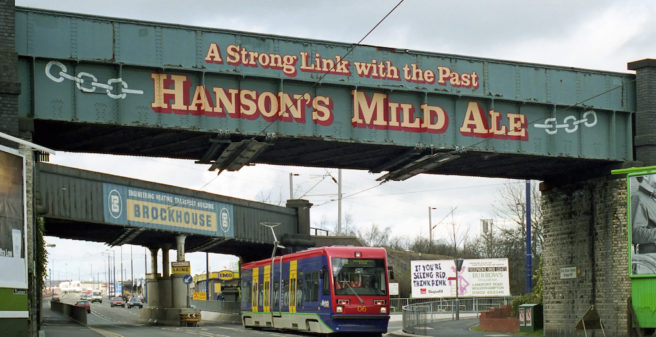
In an exclusive three-part series, we summarize the history, the rolling stock and the expansion of the so-called West Midlands Metro. This is the second part which covers the route of the light rail system. The first part, in which the history and expansion of the Midlands Metro was covered, can be found here:
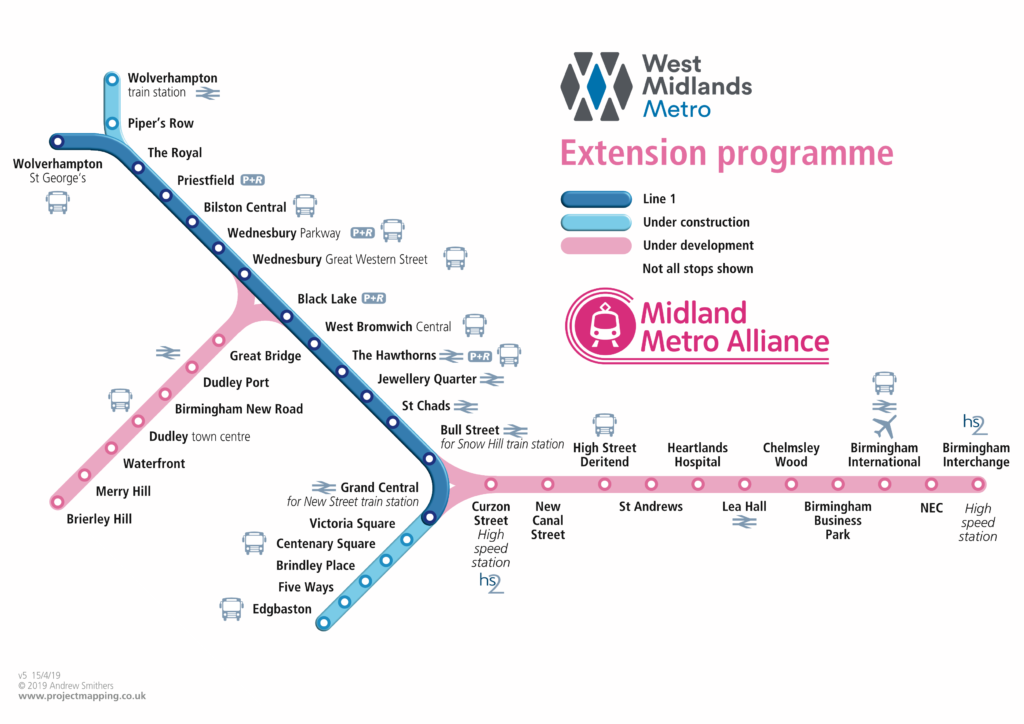
The temporary terminus at Birmingham Library has two platforms with crossovers allowing each to be used alternately. The tram departs on battery power through the Paradise Circus redevelopment site to the stop in the shadow of Birmingham’s impressive Town Hall, recently restored after many years out of use. En route, tickets and passes are checked or sold by an on-board team member, a role introduced following significant issues with the at-stop ticket machines installed initially. A steeply graded descent with tight curves follows to the Grand Central stop where the pantograph will normally be raised for the rest of the journey. Similar curves and gradients mark the route from here on street through stops in Corporation Street and Bull Street to reach the grass track reservation alongside Snow Hill station and the new stop at St Chads for the city’s RC cathedral. On leaving here the tram joins the former railway formation, originally opened in 1854 as a dual gauge (broad and standard) continuation of Brunel’s main line from London.
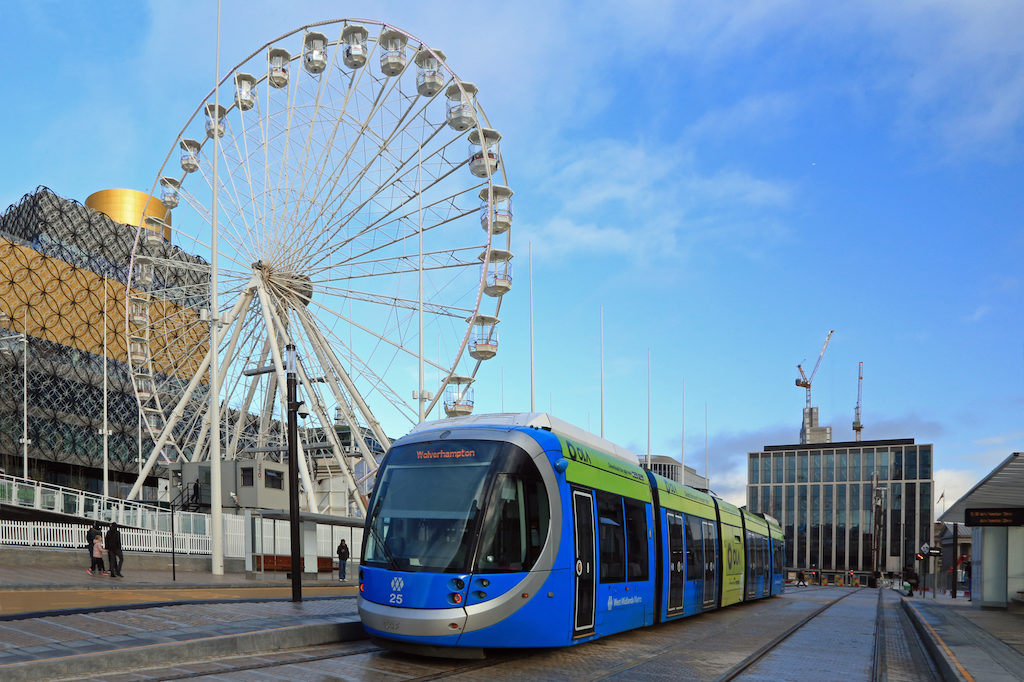
CAF tram 25 stands at the interim Birmingham Library terminus on 21 December 2019 I © David Cole 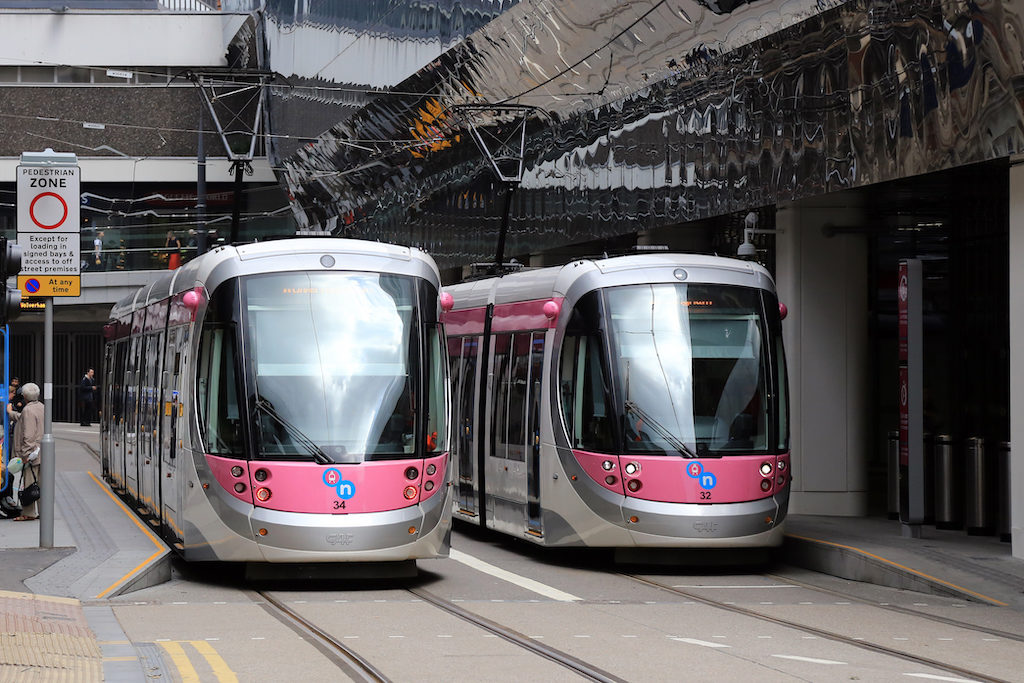
CAF trams 32 and 34 at the busy Birmingham Grand Central stop on 16 June 2016 I © David Cole 
CAF tram 37 on the steep grade of Birmingham’s Corporation St on 16 June 2016 I © David Cole 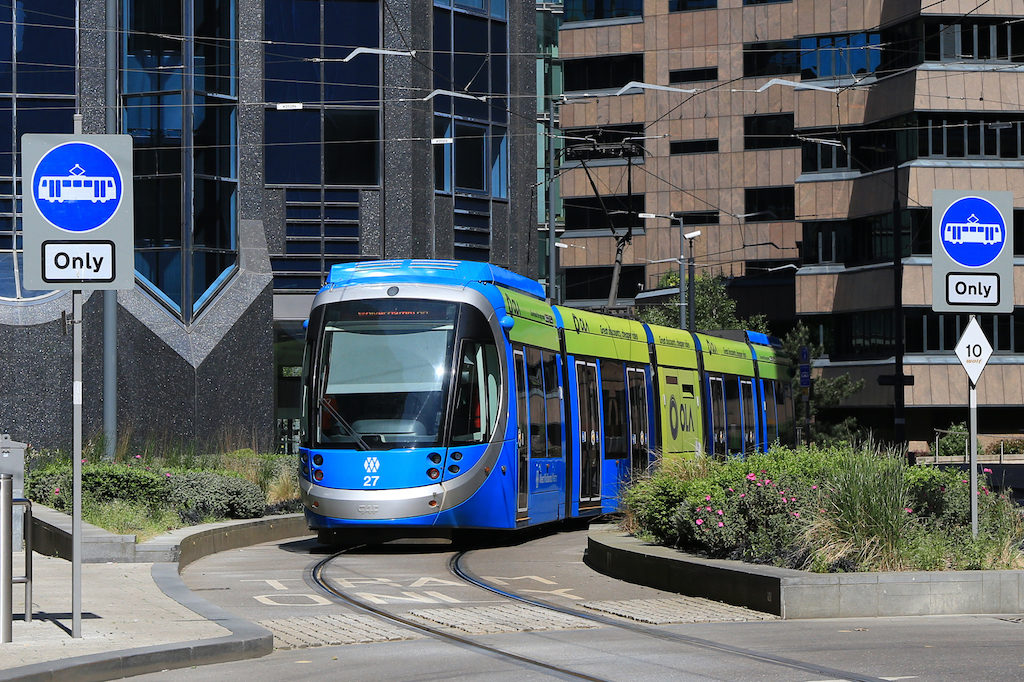
CAF tram 27 departs Birmingham Bull St on 29 May 2020, passing the location of the terminus used by Birmingham’s final first-generation trams until 1953 I © David Cole
The rail section features 20 stops including two interchanges with heavy rail services at Jewellery Quarter and the Hawthorns. Between these is the Queen’s Head viaduct taking the Metro over a freight access line, the single most expensive structure on the initial route. A series of stops serves the centre of West Bromwich, Lodge Road being the most distinctive with a lift tower providing access to the platforms in a deep cutting. There is a traffic-light controlled level crossing on the approach to Black Lake stop which is followed by Hill Top tunnel. The longest section without intermediate stops then leads to Wednesbury Great Western Street stop. This is alongside the depot although the depot access track joins the route at the next stop, Wednesbury Parkway which has a third platform face for trams entering or leaving service. Bilston Central stop is in a deep narrow cutting requiring lifts to staggered and curved platforms but is very convenient for the town centre and bus station.
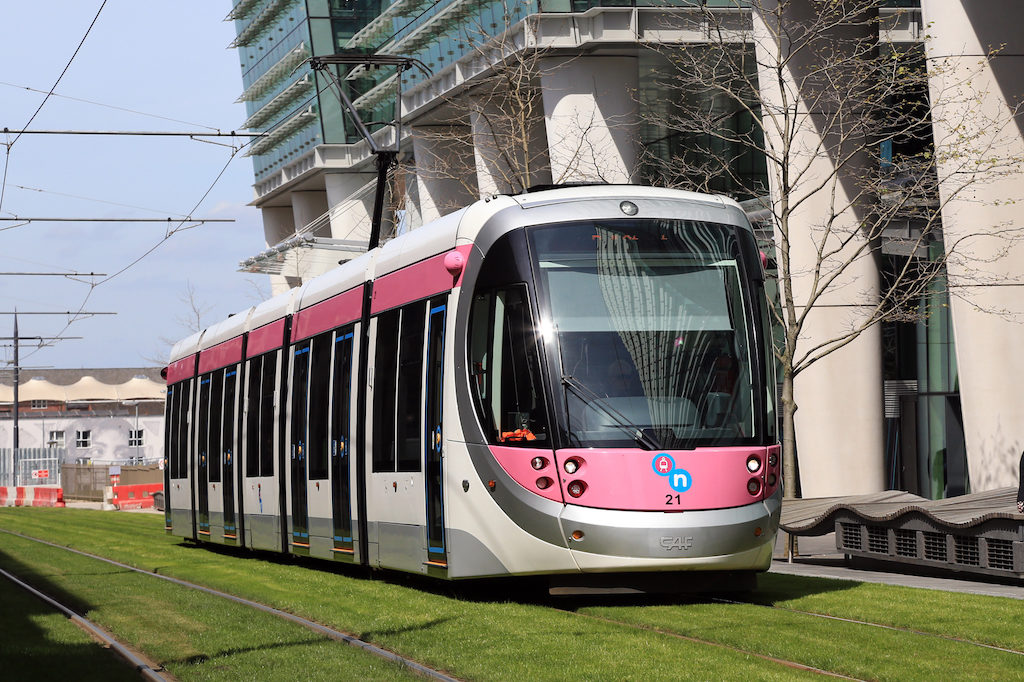
The reservation alongside Birmingham’s Snow Hill station is grassed. CAF tram 21 is in-bound to Birmingham on 4 May 2016 I © David Cole 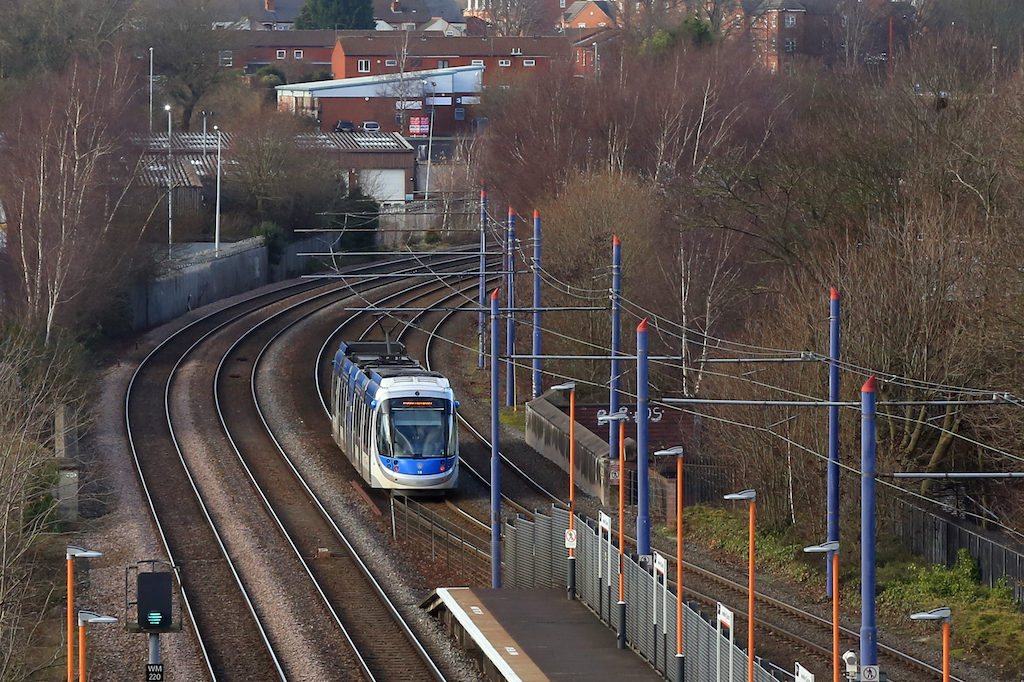
Seen from the footbridge of the adjacent heavy rail station, CAF tram 19 is departing from Jewellery Quarter stop on 23 December 2019 I © David Cole 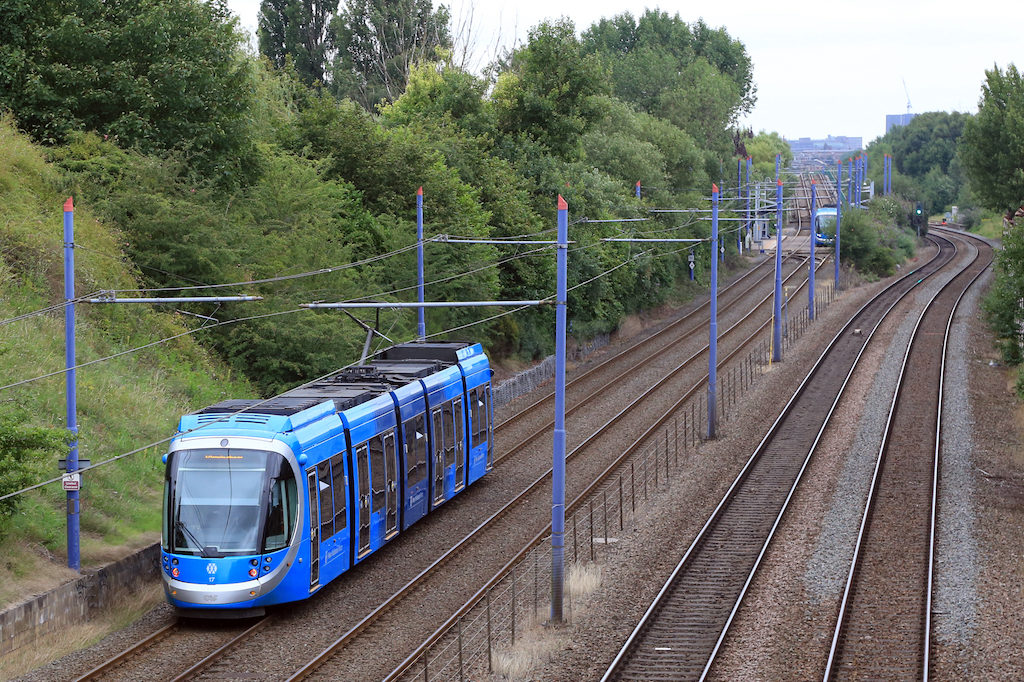
CAF tram 17 approaches the Booth Street, Handsworth stop where tram 34 is standing on 18 July 2020. Beyond the stop is the Queens Head flyover, its impact much softened by 20 years of foliage growth I © David Cole 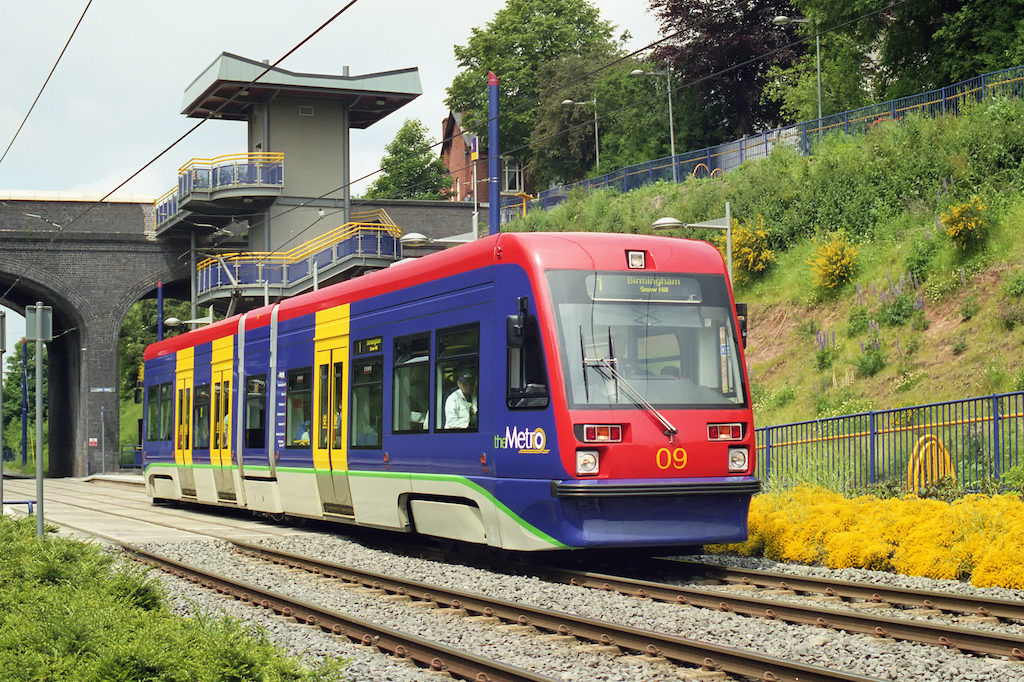
West Bromwich Lodge Road stop in a deep cutting is one of the most attractive photographic locations on the Metro, a public footpath parallels the tracks from the West Bromwich Central stop. T69 tram 09 calls on 31 May 1999 I © David Cole
After the Priestfield stop, the tram joins Wolverhampton’s Bilston Road, initially running in the carriageway before moving on to a central reservation at the only on-street stop, The Royal. This was intended to serve Wolverhampton’s Royal Hospital which however relocated shortly before the Metro opened and local redevelopment is still awaited.

Bilston Central is also in a deep cutting, its limited width necessitating staggered platforms. T69 tram 06 heads for Birmingham in July 1999 I © David Cole 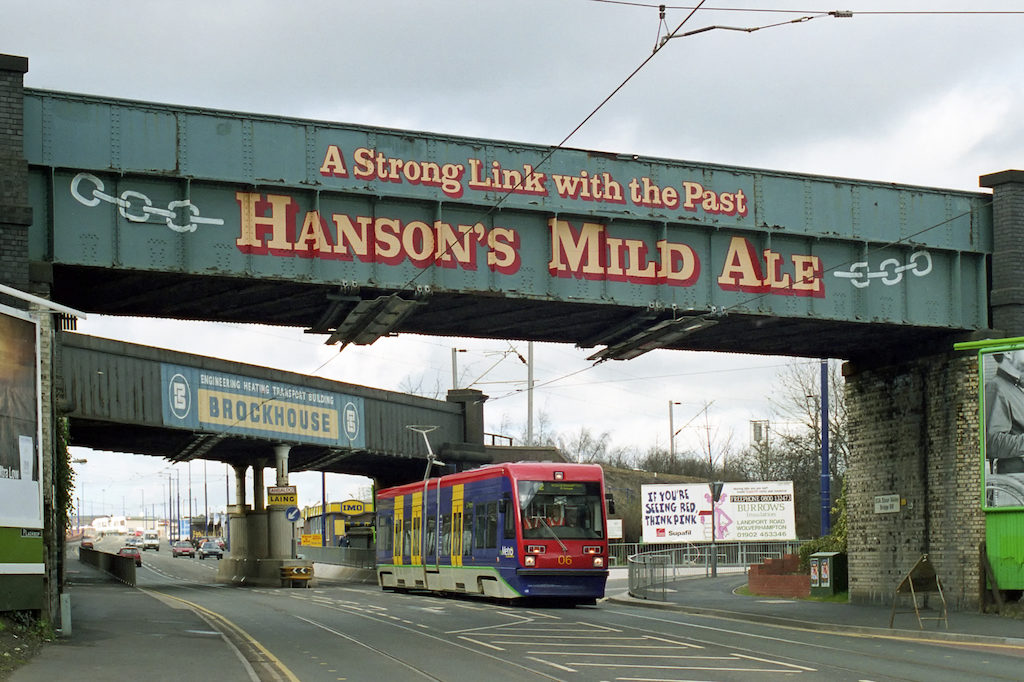
T69 tram 06 between the railway bridges on Wolverhampton’s Bilston Road during the Metro’s ghost running period in February 1999 I © David Cole 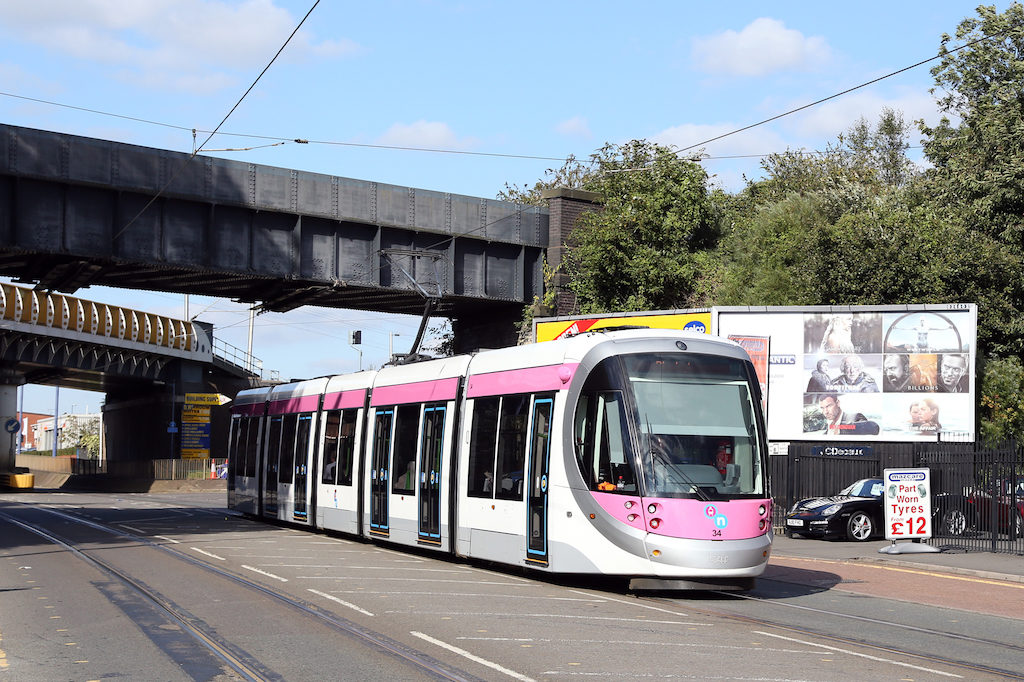
By 5 October 2016, the bridges on Bilston Road no longer carried advertising and the rear bridge carrying the main line railway has been rebuilt I © David Cole 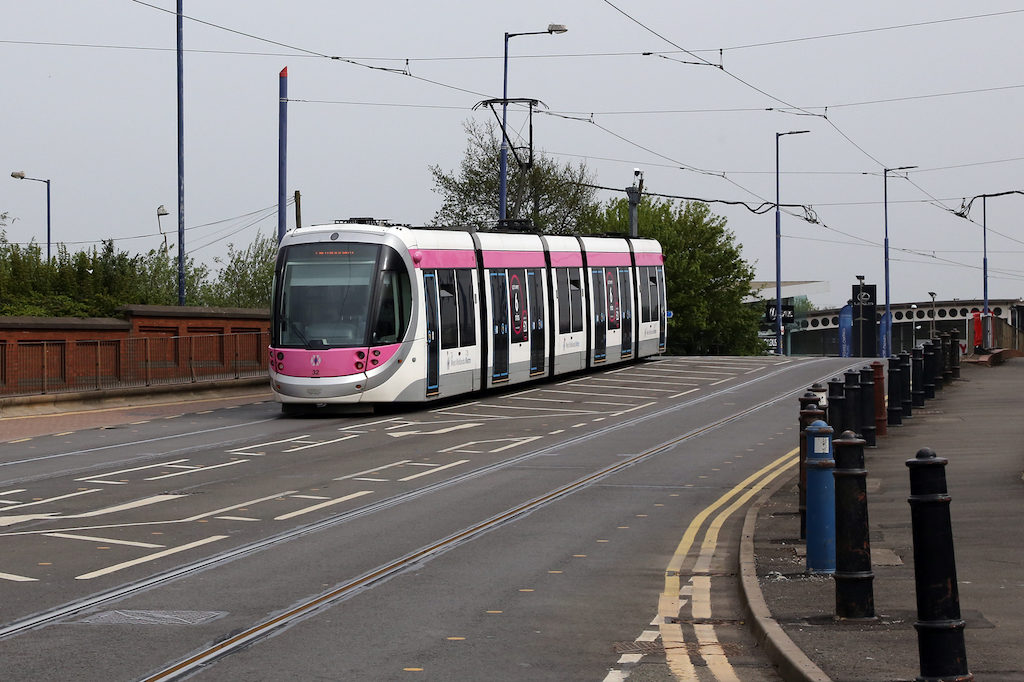
CAF tram 32 approaches the Bilston Road canal bridge when leaving Wolverhampton on 23 April 2019 I © David Cole
The final notable structure is the iconic wishbone bridge that carries Metro across the well of a traffic island on Wolverhampton’s inner ring road, the actual carriageway crossings are traffic signal controlled. Immediately before the now single-track Wolverhampton St Georges terminus is the junction for the as yet unopened extension to Wolverhampton heavy rail station.
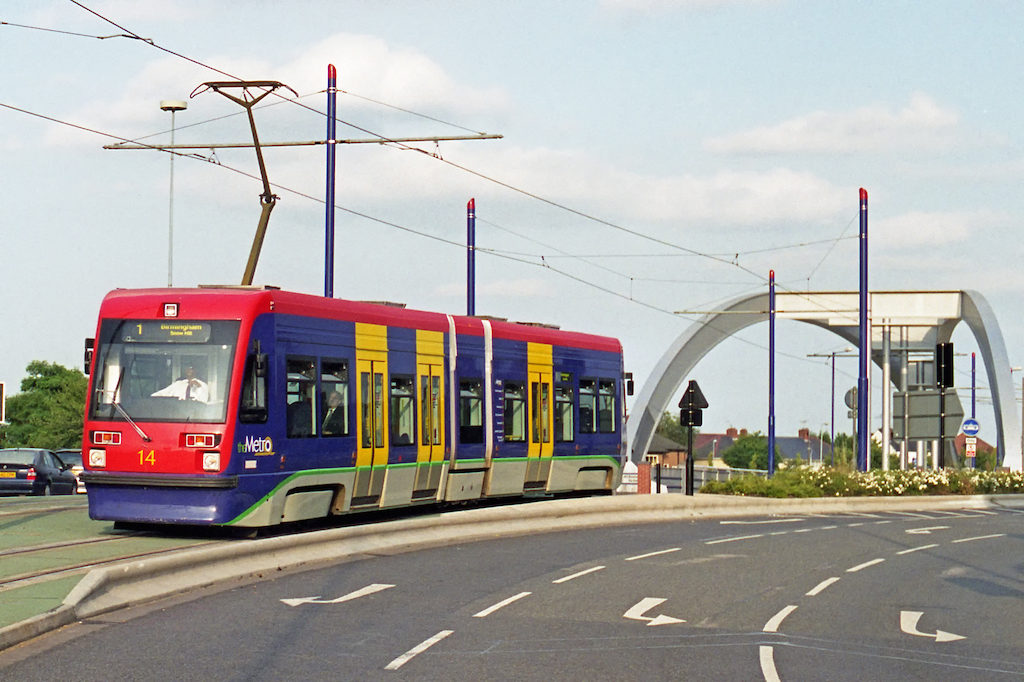
T69 tram14 has crossed the ring road via the Wishbone Bridge en route to Wolverhampton city centre in August 1999 I © David Cole 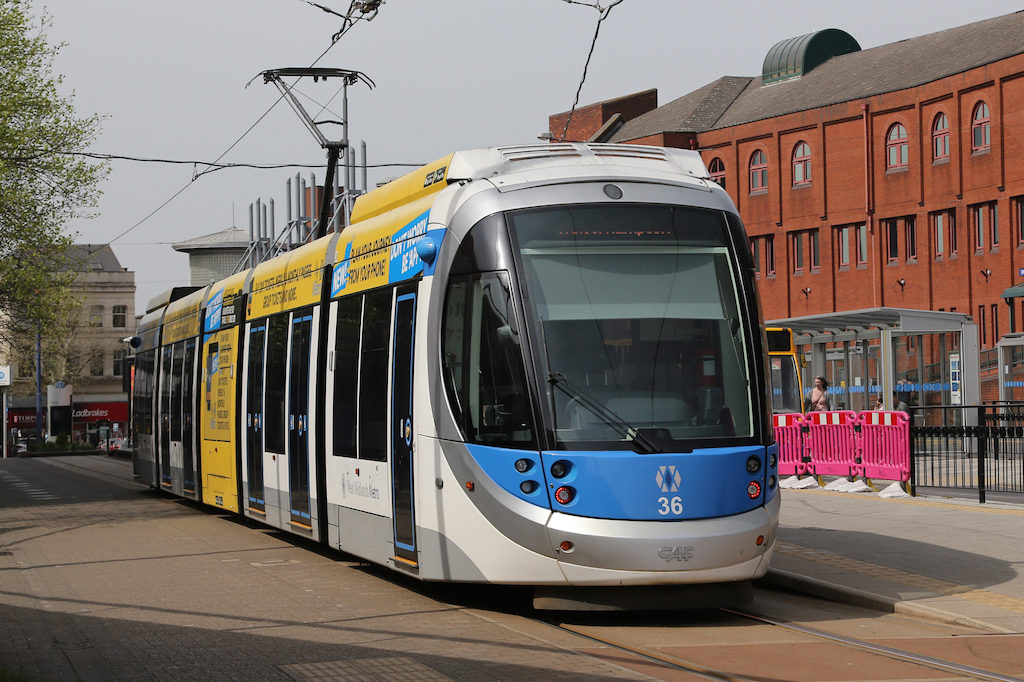
CAF tram 37 with advertising for the Metro’s journey planning app arrives at Wolverhampton St Georges terminus on 23 April 2019. The previously twin track terminal was rebuilt as a single track capable of holding two CAF trams to improve the interchange with local bus services I © David Cole

